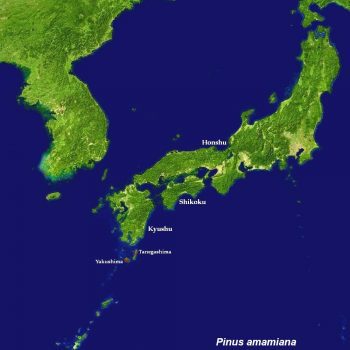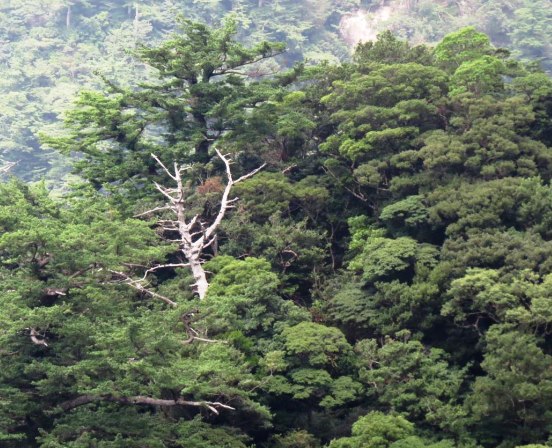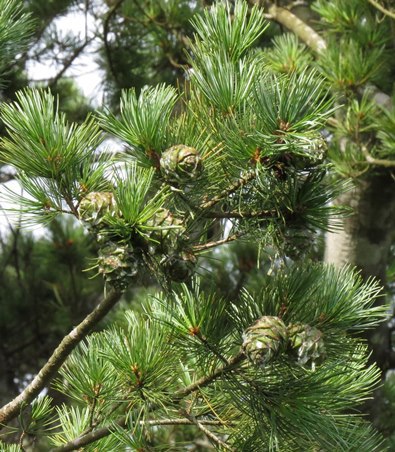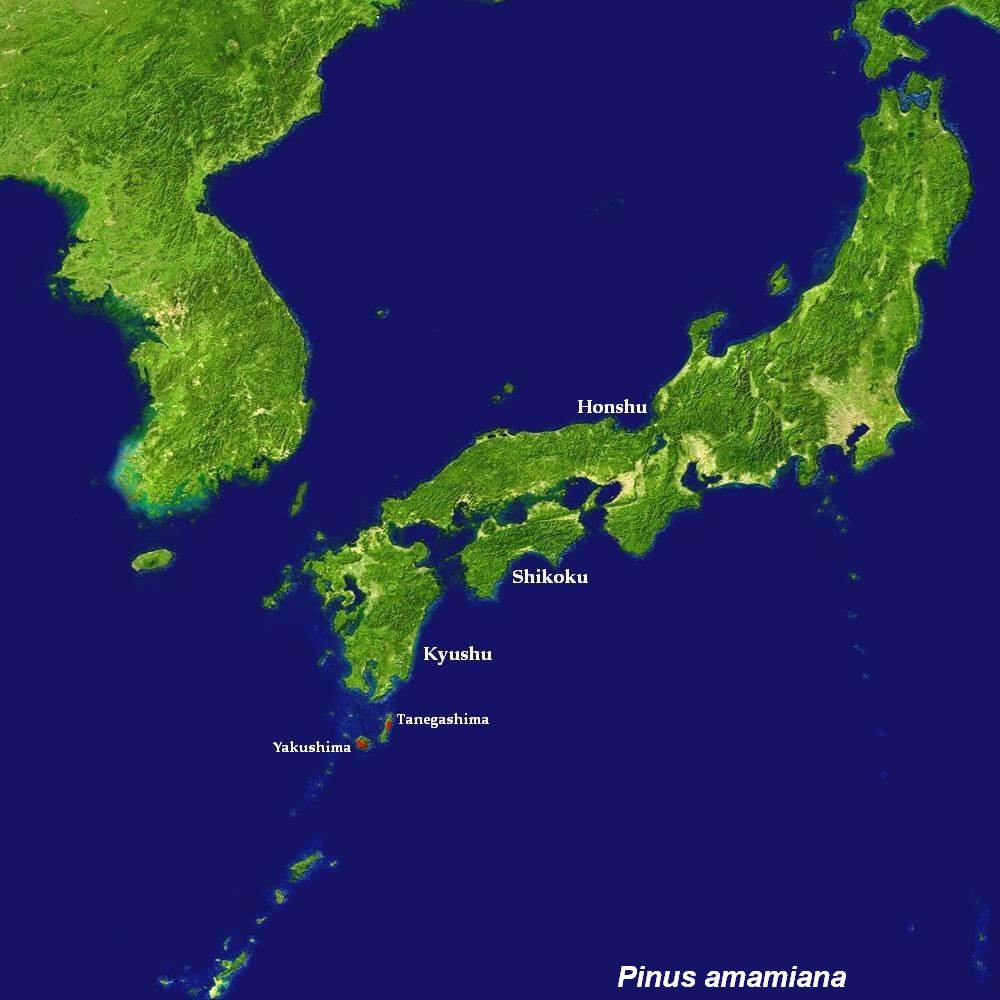subgenus Strobus (Lemmon), section Quinquefoliae (Duhamel), subsection Strobus (Loudon).
Pinus amamiana, first described in 1924 by Gen-ichi Koidzumi (1883-1953), is commonly known as Yakushima white pine, or as ヤクタãƒã‚´ãƒ¨ã‚¦, amami-goyomatsu, Yakutane-goyo, Amami-goyo in the Japanese language. The species name honors the Amami people who inhabit Japan's Ryukyu islands south of Kyushu.
Historically, Yakushima white pine has been carried as a specific variety of Chinese white pine, i.e. Pinus armandii var. amamiana. Further study revealed that this pine is more closely allied with P. parviflora and morrisonicola than armandii. This was explained in 1989 by M.P. Frankis, in an article he wrote for the Conifer Society of Australia Newsletter: "Some interesting, unusual and recently described pines." In 1998, Aljos Farjon granted it species status in World Checklist and Bibliography of Conifers; ©Royal Botanical Gardens at Kew, Richmond, U.K.
Centuries of over-harvesting its quality lumber has resulting in dwindling populations with reduced genetic diversity of remaining self-pollinated trees. In addition pine wood nematodes that were accidentally introduced from the U.S. are further threatening extant trees. The World Conservation Union (IUCN) lists this species as Endangered.
Description. Yakushima white pine is an evergreen coniferous species of tree that will grow to mature heights of 100 feet (30 m) tall with a trunk up to (6 feet (200 cm) in diameter, measured at breast height.

Distribution. This species is native to Kyushu, Japan, restricted to the islands of Yakushima (three populations) and Tanegashima (one population), growing at elevations of 300 to 2,400 feet (100 - 800 m) above sea level, on rocky slopes. Hardy to USDA Zone 9, cold hardiness limit between 20° and 30°F (-6.6° and -1.1°C).


